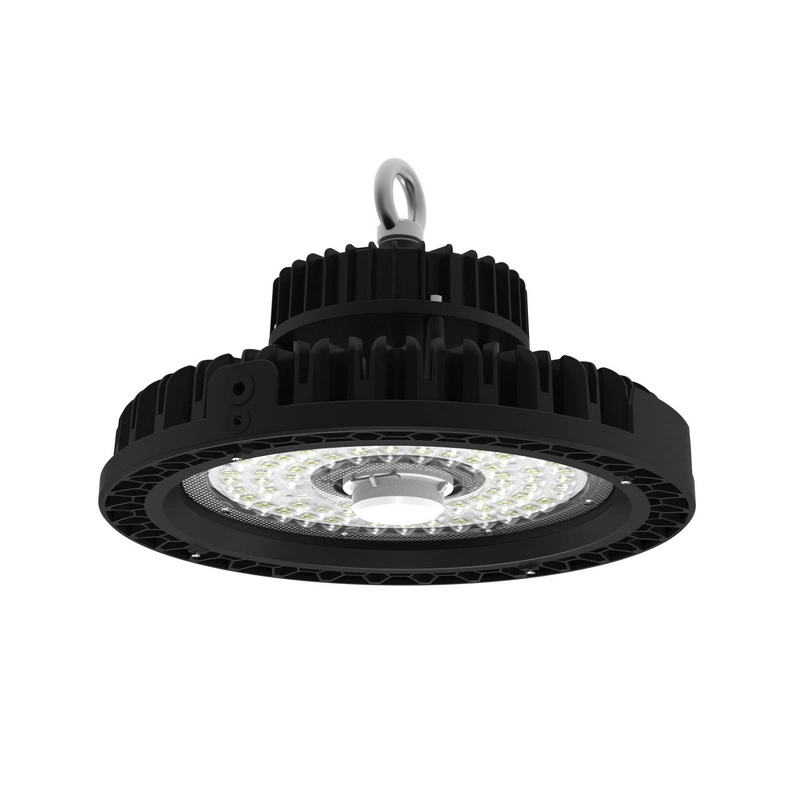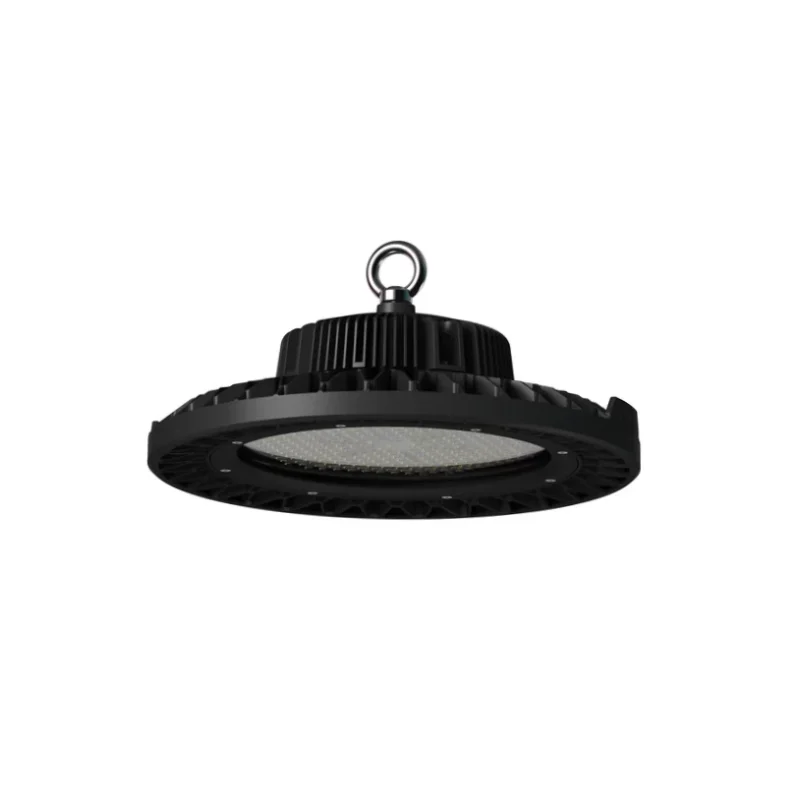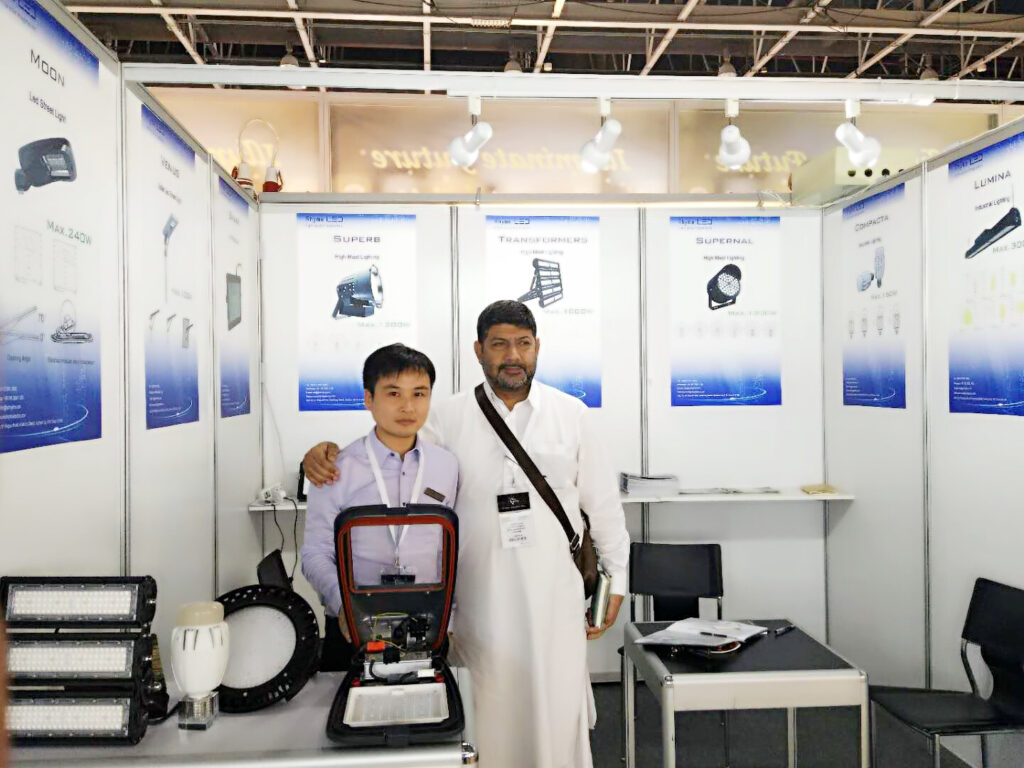Table of Contents
Toggle1. Introduction
Light-emitting diodes, or LEDs, are now common in modern lighting. They are replacing traditional bulbs like incandescent and fluorescent lights. Factories, stores, and stadiums are quickly using long-lasting LED lights. These lights are energy-efficient, durable, and last a long time.
But how long do these lights actually last? How long do LED lights last compared to other lighting technologies? And more importantly, how can manufacturers’ warranties ensure that your investment in LED bulbs and LED fixtures pays off?
This article discusses the durability of LED lights. It shows how to calculate it and what factors affect their longevity. This is especially important for large-scale industrial uses, like factories, commercial buildings, and stadiums.
How Long Do LED Shop Lights Last?
LED shop lights, commonly used in garages, workshops, and retail spaces, typically have a lifespan ranging from 50,000 to 100,000 hours. You can view all our products available for any shop lighting. Just like standard LED bulbs, their actual lifespan depends on factors such as heat dissipation, usage environment, and driver quality.
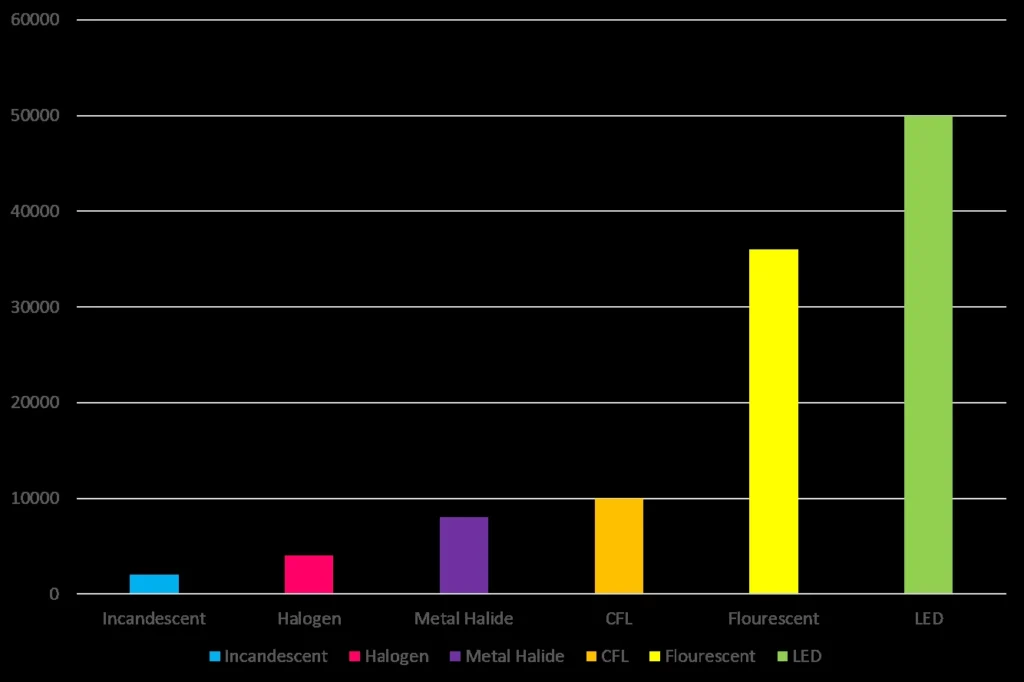
2. What is the Service Life of LED Lights?
2.1 Introduction to Basic Concepts
The service life of LED lights refers to the duration these lights remain functional before they start degrading or failing. LED lights last much longer than regular incandescent bulbs, which usually last about 1,000 hours. This makes LEDs a reliable choice for large installations. In places like factories, stores, and stadiums that need bright and reliable lighting, LED lights last a long time.
2.2 Comparison with Traditional Lights
Traditional lighting technologies, such as incandescent and fluorescent bulbs, pale in comparison to LEDs in lifespan. Incandescent light bulbs usually last between 1,000 and 2,000 hours. In contrast, fluorescent bulbs can last about 10,000 to 15,000 hours.
Alternatively LED lights have a lifespan ranging from 25,000 to 50,000 hours or potentially even longer. This makes long-lasting LED lights the best choice for places where lighting is important, like factories, sports arenas, and stores.
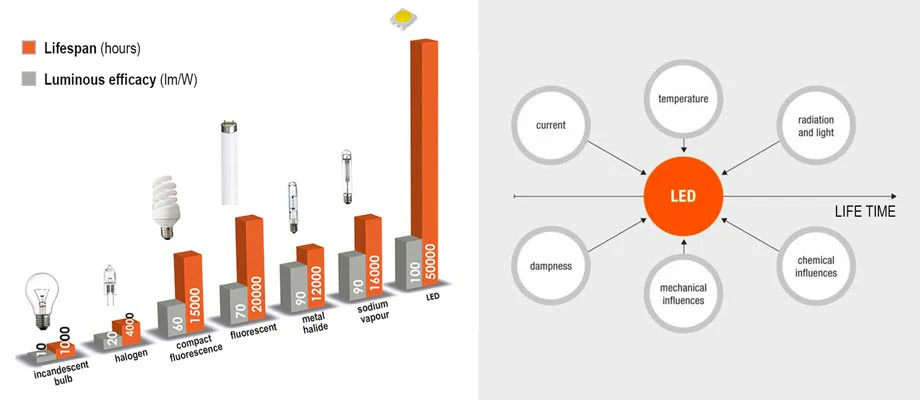
3. How to Calculate LED Lifespan?
LED lights last a long time, usually between 25,000 and 100,000 hours. This depends on how they are used and their quality. However, converting these hours into practical terms, like years, can help users understand how long their investment will last.
For example:
- 50,000 hours in years: This is a common metric used in commercial and industrial settings. If an LED light operates 8 hours per day, it can last up to 17 years.
- How many days is 50,000 hours? Using the lights continuously, 24/7, equates to roughly 2,083 days or approximately 5.7 years.
3.1 Calculating Lifespan Based on Usage Patterns
The lifespan of LED bulbs varies depending on how they are used. For instance:
- How long do LED downlights last? People often use downlights for accent lighting, and they can last up to 25,000 hours.
- What is the lifespan of LED ceiling lights? Ceiling lights, especially in commercial spaces, can last between 35,000 and 50,000 hours.
- How long do LED light bulbs last? General-use bulbs in homes or offices usually last between 25,000 and 50,000 hours. This depends on the manufacturer and how they use the products.
3.2 Importance of Manufacturer's Warranty
When investing in LED lights for large-scale installations, it’s crucial to consider the manufacturer’s warranty or guarantee. This acts as a safety net for businesses and industries. It guarantees that if the lights fail early, the repair or replacement costs get covered.
How long do LED bulbs last according to their warranty? Typically, warranties last between 3 to 7 years, depending on the brand and product quality. LedRhythm provides extended warranties for its LED high bay lights, industrial floodlights, and LED strip lights. This ensures they perform well for many years.
4. How Long Do LED Bulbs and Fixtures Last?
4.1 How Long Do LED Bulbs Last?
LED bulbs, depending on the quality and brand, last between 25,000 to 50,000 hours. Under reasonable use, LED bulbs can last for more than 8 to 15 years.
It’s important to note that LED bulbs don’t stop working after 50,000 hours. Instead, they use the L70/L80 standard. This means that after 25,000-50,000 hours, the LED’s brightness decays to 70% or 80% of its original brightness, but you can still use it. Learn more about light decay and lifespan.
- How long do LED battery lights last? Battery-powered portable LED lights usually last around 10,000 hours. In contrast, larger industrial LED lights can last much longer.
- How long do LED strip lights last with warranty? LED strip lights, like those used in stadium lighting, come with warranties that guarantee performance for 5 to 7 years.

4.2 How Long Do LED Light Fixtures Last?
An LED fixture’s lifespan can vary based on the design, heat management, and power supply. How long do LED light fixtures last?
On average, they last about 50,000 hours. However, in industrial and commercial settings, high-quality LED fixtures can last even longer. Designers create integrated LED light fixtures, such as those in LedRhythm’s lineup, for long-term use. They work well in tough environments.
4.3 Understanding the Warranty Period
Many manufacturers offer warranties ranging from 5 to 10 years, depending on the LED product. For instance:
- How long should LED bulbs last under warranty? If the product fails during the warranty period, the company usually replaces it for free. This makes it a good investment for large installations.
- How long do LED lights last with warranty? Ledrhythm’s LED lights, like those used in stadium lighting, come with warranties that guarantee performance for 5 years.
5. Factors Affecting LED Lifespan
5.1 Heat Management
Heat is one of the most significant factors affecting the lifespan of LED lights. Poor heat management can cause LEDs to burn out prematurely or degrade in brightness over time.
5.2 Power Supply
Consistent and stable power is essential for the long life of LED lights. Power fluctuations can shorten the lifespan of LEDs. This is why proper voltage regulation is important in factories and commercial buildings.
5.3 Quality of the LED Chip
The quality of the LED chip used in the light determines how long it will last. Lower-quality chips may degrade faster, resulting in a shorter lifespan. Engineers design higher-quality LEDs, like those in LedRhythm products, for longevity in industrial settings.
5.4 Usage Conditions
The operating environment also plays a role in determining the lifespan of LED lights. For example, LED lights in extreme temperatures or high humidity may wear out faster than those in other.
6. Ways to Extend the Lifespan of Your LED Lights
6.1 Check Your Power Source
Ensure that your electrical system is providing a consistent and stable power supply. Fluctuations in voltage can damage LED lights and reduce their lifespan.
6.2 Turn Off the Lights When Not in Use
One of the simplest ways to extend the lifespan of LED lights is to turn them off when not in use. In industrial settings, using sensors or automation systems can help manage this.
6.3 Choose High-Quality Products
Opt for LED products designed for durability, such as those offered by LedRhythm. They provide special LED lighting for factories, businesses, and stadiums.
6.4 Regular Maintenance
Regularly cleaning and inspecting your LED lights can prevent dust and grime from obstructing heat dissipation. This contributes to the longevity of your lights.
6.5 Install in Proper Environments
Ensure that your LED lights are installed in environments that are suitable for their design. For example, use covered LED lights in areas with high moisture. Avoid using enclosed fixtures with bulbs that lack a rating for these conditions.
6.6 Ledrhythm's LED Lights
The LEDRHYTHM brand has been focusing on the manufacturer of industrial high pole lighting solutions for 10 years. Our team has skilled optical R&D engineers and professional equipment.
Our factory workshop covers over 10,000 square feet. We serve more than 5,000 customers, both domestic and foreign. This makes us a leader in the LED industry.
- Heat dissipation: Each LEDRHYTHM lamp allows good heat dissipation. This helps lower the LED chip’s operating temperature. It also slows down light decay and extends the LED’s life.
- Driver: The driver is a key component to provide stable current and voltage to the LED. To provide a stable power supply for LEDs, LEDRHYTHM uses high-quality drivers from well-known brands. This helps reduce current and voltage.
- Quality: The quality of LED is also an important factor in determining the lifespan. Using high-quality LED parts and strong, durable materials with good heat conduction can help our lamps last longer.

7. People Also Ask
How long Will LED lights last under normal circumstances?
This assumes normal use, with no other factors interfering. For example, the lights should be kept at a moderate temperature, dry and dust-free, with a stable voltage and not frequently turned on and off.
Industrial and commercial LED lights typically exceed the theoretical lifespan of L70/L80 standards, often exceeding 50,000 hours.
Can the LED light bulb be used no longer after its life expectancy is used up?
Of course not. The life expectancy of an LED light bulb refers to the time it takes for the light to decay to a standard level. You can still use the bulb, but it will be noticeably less bright.
What does LED light lifespan have to do with?
- Heat dissipation: Better heat dissipation means longer lifespan; overheating accelerates light decay and component aging.
- Power supply quality: A high-quality, stable and reliable power supply can extend overall lifespan.
- Usage environment: High temperature, high humidity, and dusty environments can shorten lifespan.
- Power-on time and frequency: Although LEDs are resistant to frequent on-off cycles, long-term, high-frequency use can still affect the lifespan of the power supply.
- LED chip and material quality: High-quality chips and high-temperature-resistant materials can significantly extend lifespan.
- Voltage stability: Large voltage fluctuations can damage circuits.
Will the use environment of LED shop lights extend its service life?
Yes. This is because the lifespan of LED lights is affected by temperature, switching frequency, and voltage.
LED shop lights are generally used in well-ventilated, stable, and dust-free spaces. Their actual lifespan may exceed their theoretical lifespan.


